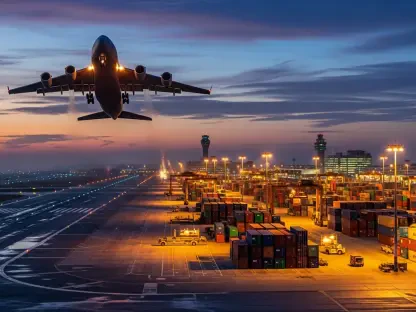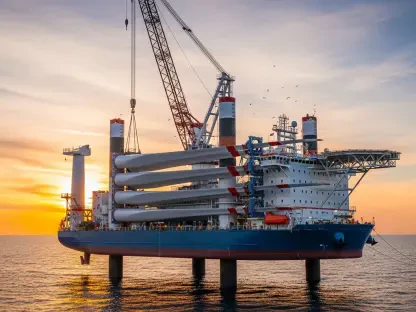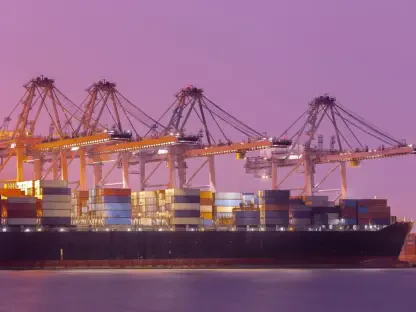On a seemingly ordinary night, a commercial truck driver from Supersonic Transport, based in Surrey, British Columbia, found himself at the center of a major transportation mishap. On April 2, at about 11 p.m., the driver carried an overheight load that grossly exceeded the legal limit of 4.15 meters with an excavator standing at 5.18 meters. This miscalculation resulted in the truck striking trolley wires along East Hastings Street at the Commercial Drive intersection, leading to extensive damage and significant disruption. This incident necessitated rapid intervention from multiple agencies, emphasizing the crucial role of regulatory compliance in the trucking industry.
Immediate Consequences and Response
Fleet Grounding and Safety Investigation
The consequences for Supersonic Transport were swift and severe. By 6 p.m. that day, the entire fleet of 92 vehicles was grounded pending a comprehensive safety investigation by the Ministry of Transportation and Transit. This measure was primarily aimed at determining the company’s adherence to vehicle safety standards and uncovering any systemic compliance issues. The grounding of the fleet caused operational disruptions within the company, halting all services and leading to a review of internal processes and safety protocols.
The investigation focused on several critical areas, including the company’s practices related to load assessments, driver training, and adherence to safety regulations. The Ministry aimed to identify whether the incident was a result of an isolated lapse in judgment or indicative of broader issues within the company’s operational procedures. This comprehensive approach underscored the importance of regular audits and inspections to ensure ongoing compliance with transportation regulations.
Citations and Fines for the Driver
The driver involved in the incident faced substantial penalties, receiving eight citations totaling $1,064 in fines. These citations covered a range of violations, including exceeding the maximum vehicle height, failing to display warning lights for the oversized load, lacking proper warning devices, operating without necessary equipment, neglecting to conform to posted size or weight signs, failing to carry a permit, and not having an oversize sign. These violations highlighted the critical need for drivers to be fully aware of and comply with safety regulations to prevent such incidents in the future.
These fines served as a stark reminder to all commercial vehicle operators about the importance of adhering to regulatory requirements. Proper training and regular refresher courses for drivers are essential to maintain a high standard of safety within the industry. Ensuring that drivers are equipped with the necessary knowledge and tools to handle oversized loads safely can significantly reduce the risk of similar incidents occurring.
Public Transportation Disruption
Immediate Impact on Transportation
The incident caused significant disruptions to public transportation services in the affected area. The trolley wires between Clark and Commercial drives were brought down, leading to detours and delays for bus routes 14, 16, and 20. TransLink, the regional transportation authority, advised passengers to plan for extended commute times while repairs were underway. The lack of a specific timeline for restoring service added to the uncertainty and inconvenience faced by daily commuters.
The disruption underscored the interconnected nature of urban infrastructure and the cascading effects that a single incident can have on public services. It also highlighted the importance of having robust contingency plans in place to quickly address and mitigate the impact of unforeseen events. Effective communication with the public during such times is crucial to manage expectations and provide clear guidance on alternative routes and transportation options.
Collaborative Efforts for Recovery
The prompt response from multiple agencies, including the Vancouver Police Department, Metro Vancouver Transit Police, and the Ministry of Transportation and Transit’s CVSE Branch, was instrumental in managing the immediate aftermath of the incident. Their collaborative efforts ensured that safety measures were swiftly implemented, and necessary repairs commenced without delay. This multi-agency approach emphasized the importance of coordinated action in responding to transportation emergencies.
The incident also served as a learning opportunity for all parties involved. By analyzing the response and identifying areas for improvement, agencies can enhance their preparedness for future incidents. Regular drills and simulations of similar scenarios can help refine emergency response protocols and ensure that all stakeholders are well-equipped to handle such challenges effectively.
The Importance of Regulatory Compliance
Preventing Infrastructure Damage
The Vancouver incident highlighted the necessity for trucking companies to adhere strictly to transportation regulations to prevent infrastructure damage and public service disruptions. Compliance with height restrictions, proper marking of oversized loads, and adherence to safety protocols are non-negotiable aspects of commercial trucking. Regular training and awareness programs for drivers on these aspects can significantly reduce the risk of accidents and ensure the smooth functioning of transportation networks.
Additionally, trucking companies should invest in advanced technologies and tools to aid in the accurate assessment of load dimensions and ensure compliance with legal limits. Implementing measures such as automated load height detection systems can provide an additional layer of safety and prevent similar incidents from occurring in the future.
Enhancing Operational Compliance
On an otherwise ordinary night, a commercial truck driver working for Supersonic Transport, based in Surrey, British Columbia, became the focal point of a significant transportation debacle. On April 2nd, around 11 p.m., the driver was transporting a load that was excessively overheight, severely surpassing the legal limit of 4.15 meters. The load, an excavator, stood at a towering height of 5.18 meters. This sizeable miscalculation led the truck to collide with trolley wires along East Hastings Street at the Commercial Drive intersection. The impact caused extensive damage and considerable disruption, necessitating immediate response from various agencies. The chaos underscored the critical importance of adhering to regulatory compliance within the trucking industry. Such incidents highlight the necessity for rigorous checks and awareness to prevent future occurrences, emphasizing how vital it is for drivers and companies to strictly observe height restrictions and transportation laws.









